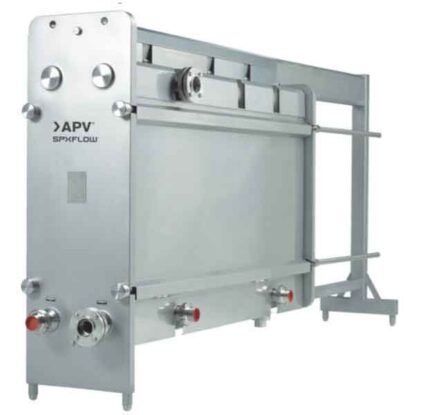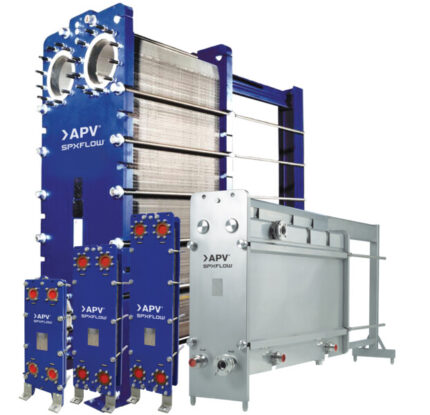Sesinoks gasketed hygienic and industrial plate heat exchangers: Compact, efficient, and versatile heat transfer solutions for a wide range of applications.
Showing all 2 results
Gasketed – Hygienic Plate Heat Exchangers
Gasketed – Industrial Plate Heat Exchangers
The global applications for industrial heat exchangers calls for a wide and deep product range, putting great demand on the equipment. SPX FLOW's portfolio of APV ParaFlow is designed to satisfy your needs, whether this is for very small flows, or the extra-large kind, up to 4500 m3/h. With our selection of materials, connections and accessories, we can supply equipment for practically every heat transfer need. The ParaWeld and Paramine technologies expand the boundaries for gasketed plate heat exchangers. Added our long experience in after sales services, SPX FLOW is your all-round partner for heat transfer.
What are Gasketed Plate Heat Exchangers?
Gasketed plate heat exchangers are a type of heat exchanger consisting of metal plates that touch each other and through which heat transfer occurs. These plates are usually made of brass or stainless steel and are usually connected to each other by welding or riveting. Gasketed plates are used to ensure heat transfer between two different fluids (usually liquid or vapor).
Where are Gasketed Plate Heat Exchangers Used:
- Heating, ventilation and air conditioning systems
- industrial processes
- Food and beverage industry
- Chemical processes
- It is used in areas such as the oil and gas industry.
Advantages of Gasketed Plate Heat Exchangers:
- High heat transfer coefficient: Gasketed plates provide efficient heat transfer thanks to their high heat transfer coefficient.
- Compact design: The high surface area of the plates ensures that the heat exchanger is compact and takes up less space.
- Modular structure: Gasketed plate heat exchangers can be easily expanded or rearranged according to need, thanks to their modular structure.
Disadvantages of Gasketed Plate Heat Exchangers:
- Risk of calcification: Depending on the hardness of the water, calcification problems may occur in gasketed plate heat exchangers, which may affect performance.
- High pressure and temperature limits: In some applications, gasketed plate exchangers may have limited pressure and temperature tolerance.
- Maintenance requirement: Gasketed plate heat exchangers may require regular cleaning and maintenance.
Gasketed Plate Heat Exchangers Types:
- Welded Gasketed Plate Heat Exchangers: The edges of the plates are joined by welding.
Plate Heat Exchangers with Compression Gaskets: The plates are brought together by rivets or compression. - Brazed Gasketed Plate Heat Exchangers: The plates are brought together by soldering.
 Stainless Steel Products
Stainless Steel Products Mixing
Mixing Pumps
Pumps Heat Exchangers
Heat Exchangers System Solutions
System Solutions





